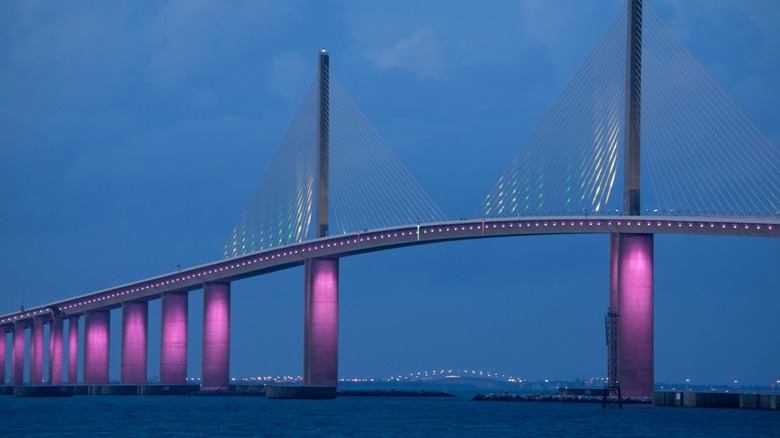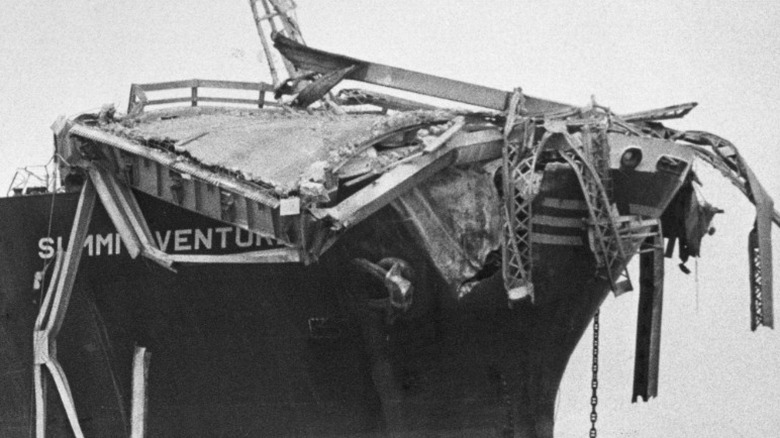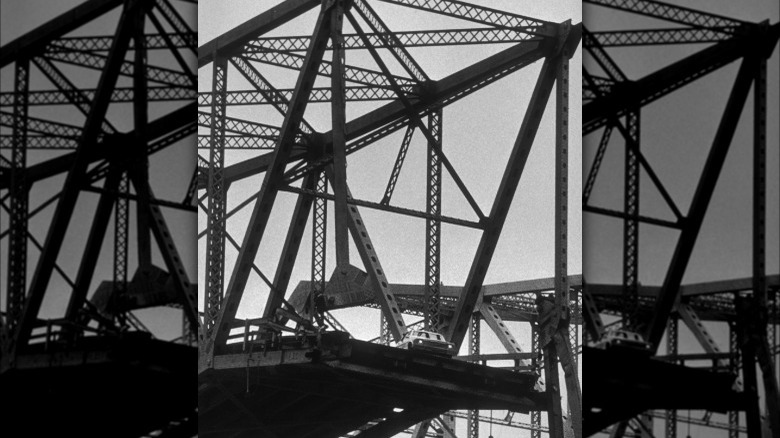The Horrific Sunshine Skyway Bridge Disaster
Infrastructure disasters can be some of the most horrific that people face in the modern era. The buildings, roadways, and bridges we utilize daily without care are objects that we sometimes take for granted. They are designed and constructed by professionals and tested to withstand the forces of nature and the strain users put upon them. Unfortunately, there are instances in history where the limits of these structures are put to the ultimate test and fail. Whether from design flaws or human error, there have been notable cases where mistakes have led to massive amounts of human casualties.
In 1981, Kansas City, Missouri experienced more than 100 deaths and 200 injuries when a skywalk at the Hyatt Regency Hotel collapsed (via NPR). Years later in 2007, a bridge section on I-35 near Minneapolis, Minnesota fell into the river below, killing 13 and injuries scores more (per NPR). Whenever we enter a building or drive on a highway, we might try to not think of the worst-case scenarios, but the reality is that they sometimes happen.
Such an incident happened more than four decades ago in Tampa, Florida when the Sunshine Skyway Bridge collapsed when a freighter collided with one of the supports. In a matter of minutes, dozens of lives were lost and the trajectory of one successful deputy harbor pilot was forever changed.
The disaster over the water led to 35 deaths
The original span of the Sunshine Skyway Bridge over Tampa Bay extended 14 miles over the water. It opened in 1954 (via Popular Mechanics) to both north and southbound traffic but was soon not efficient enough for the growing number of vehicles in this bustling Florida city. In 1971, a second span was opened to ease congestion (per Manatee Library). The new span would carry southbound traffic while the original span would be taking all vehicles north.
At a little past 7:30 a.m. on May 9, 1980, traffic was flowing steadily across the Sunshine Skyway Bridge over Florida's Tampa Bay. One hundred fifty feet below the concrete, boat traffic was easing through. A mile away from the bridge, the Summit Venture, a 608-foot-freighter, was approaching when a squall appeared out of nowhere. The ship was subjected to severely high winds and heavy rains that reduced visibility to zero. The pilot of the freighter had two options. He could anchor his ship and run the risk of it colliding with another seacraft. Or, he could veer it through a nearly 1,000-foot wide gap between two of the bridge piers. He opted for the latter. Moments later, disaster struck.
The Summit Venture lost control and collided with one of the bridge support piers. This sent off a chain reaction that led to nearly 1,300 feet of roadway falling into the bay below. Going with it were eight vehicles, including a Greyhound passenger bus. Thirty-five of the 36 people who fell into the water that morning perished (per The Los Angeles Times).
The man who piloted the Summit was exonerated
The man who piloted the ill-fated Summit Venture that day was 37-year-old John E. Lerro. As a deputy harbor pilot, Lerro had a promising future ahead of him. The Los Angeles Times reports that he was to be promoted to a full harbor pilot two days after the bridge collapse, more than doubling his salary. Instead, Lerro found himself with a suspended license, upcoming hearings with government bodies, and the target of threats. At one point, he and his family had to flee their home and live in motels out of fear for their lives. False rumors that Lerro was intoxicated during the collision fueled the anger of many of Tampa Bay's residents, a few of which threatened to take their ire out on Lerro.
Lerro was ultimately exonerated from any wrongdoing by the state of Florida. A federal entity, the National Transportation Safety Board, voted 3-2 that Lerro was only partially responsible, but that the sudden storm was a significant contributing factor (per The Tampa Bay Times).
Lerro was given back his license in 1981 but surrendered it by the end of the year. He was diagnosed with multiple sclerosis, making it impossible to continue to do his job. This was the beginning of a downward spiral for Lerro, who lost his career, his marriage, and his home within a matter of just a few years. He found a new calling later in life, earning a master's degree in counseling. He worked with imprisoned people and with sexual assault victims at a local crisis center. John Lerro died in 2002.


